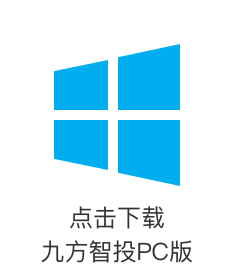Investment positives
We initiate coverage on Changhai Composite Materials (Changhai) with an OUTPERFORM rating and a target price of Rmb14.60 (based on a relative valuation approach), implying 19x 2024e and 13x 2025e P/E.
Why an OUTPERFORM rating?
Fiberglass makers have relied on price hikes for destocking since March; earnings to recover as the industry shows clear signs of bottoming out. In late March, and between mid-to-late April and early May, major fiberglass producers raised prices of mainstream products twice. In early May, some of them raised quoted prices of direct yarn 2,400tex by at least Rmb700/t (tax included) compared with end-March. Industry inventory fell to 600,000 tonnes at end-April. We believe the efforts to reduce inventory through prices hikes have temporarily paid off.
We estimate that net added output of roving yarns may reach 500,000 tonnes in 2024, with supply and demand relatively balanced. We believe this may help industry prices return to normal. In our view, industry leaders could maintain excess earnings of Rmb500-1,000/t relative to tier-2 and tier-3 firms.
Products competitive; tax rates in core overseas markets favorable. In our view, earnings of fiberglass products are less volatile and their turnover is faster than roving yarns. Changhai's core fiberglass products include chopped strand mats (CSM) and wet-laid thin mats. Its lightweight CSM is mainly used in automotive roofs. Changhai was recognized by the Ministry of Industry and Information Technology (MIIT) as a “champion”, in terms of its technology for high-performance CSM.
Changhai announced that revenue from overseas markets accounted for 20-30% of its total revenue in 2023. Some of its products exported to the EU were subject to combined anti-dumping and countervailing duty rates of 4.9% (vs. over 20% for peers). The firm demonstrated its earnings advantage when the industry experienced a long downturn over 2022- 2023. We estimate that the firm's net profit per tonne exceeded Rmb900 in 2023 (including forex gains or losses).
New 150,000-tonne production lines on track to start operations; Changhai intends to both increase sales volume and reduce costs. The firm plans to build a 600,000 tonnes intelligent production base, with production lines in Phase I (150,000 tonnes) to be put into operation in 2024.
Sales volume growth: We estimate that the firm's sales volume of fiberglass and fiberglass products could maintain growth of more than 10% in 2024. We see stronger upside potential in sales volume after new production facilities come on stream in 2025.
Cost reduction: We expect Changhai’s costs per tonne to decline steadily driven by its pyrophyllite powder plant (likely reducing costs by Rmb100- 200/t), further increases in per-capita output (200t/person at present), and potential renovation of old kilns.
Changhai’s debt-to-asset ratio (30%) lower than peers; ample funds pave the way for business expansion amid heavy capex in the industry. As of end-2023, the firm's net operating cash flow totaled Rmb719mn, its ratio of cash from sales to revenue reached 85%, and its debt-to-asset ratio was 30%, lower than peers. We believe Changhai's first three rounds of capacity expansion were funded by proceeds from its IPO, its follow-on offering, and issuance of convertible bonds, respectively. We think its low leverage ratio means Changhai still has room to expand its production capacity.
How do we differ from the market? The market is focusing on the firm’s upside in sales volume created by its new production capacity. However, we focus more on its profitability.
Potential catalysts: Increases in roving yarn prices driven by improving supply-demand conditions; on-stream operation of the firm’s new 150,000- tonne production lines.
Financials and valuation
We expect the firm’s 2024-2025 EPS to be Rmb0.77 and Rmb1.10, implying a 23% CAGR. The stock is trading at 16x 2024e and 11x 2025e P/E. Initiate with an OUTPERFORM rating and a target price of Rmb14.6, implying 19x 2024e and 13x 2025e P/E and offering 20% upside.
Risks
Deteriorating industry supply-demand dynamics; overseas trade protectionism; disappointing on-stream operation of new production lines.












